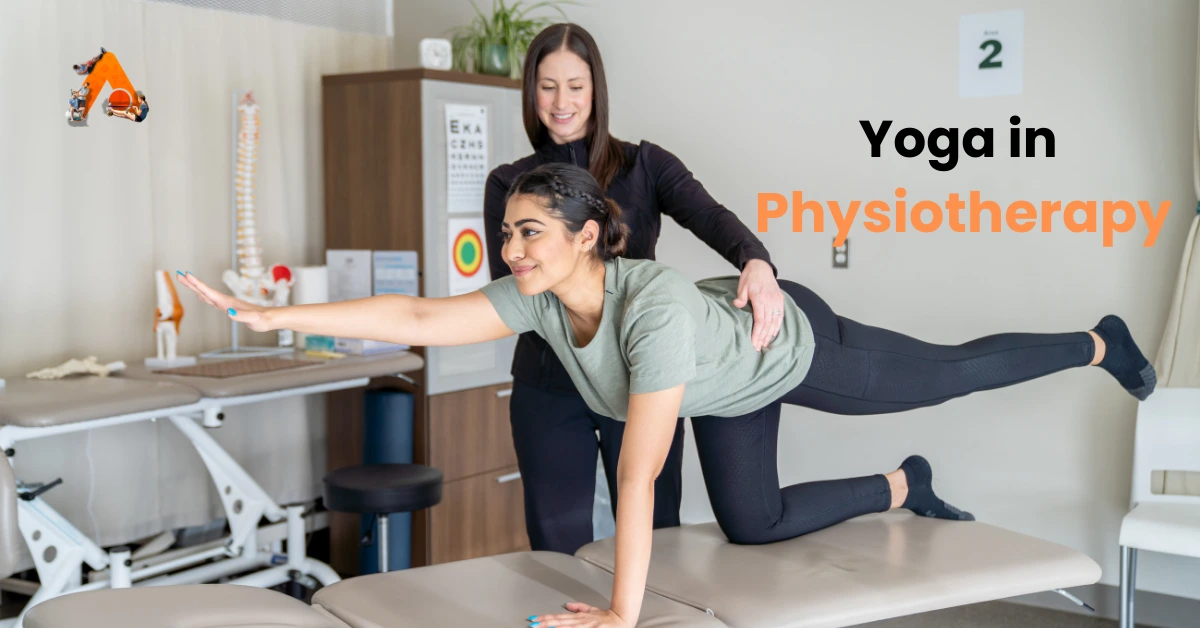Adapting yoga in PHYSIOTHERAPY : A mind body approach
Adapting yoga for physiotherapy, particularly as a mind-body approach, can be highly beneficial for various conditions, including chronic pain, stress, and mental health issues. Here’s an overview of how to effectively integrate yoga into physiotherapy practices without relying on passive modalities.
Key Components of Yoga in Physiotherapy
1. Physical Postures (Asanas)
- Focus: Enhance flexibility, strength, and balance.
- Implementation: Select gentle postures that accommodate individual capabilities and limitations. Common poses include:
- Cat-Cow Stretch: Improves spinal flexibility.
- Child’s Pose: Offers relaxation and gentle stretching.
- Warrior Poses: Builds strength and stability.
- Implementation: Select gentle postures that accommodate individual capabilities and limitations. Common poses include:
2. Breath Regulation (Pranayama)
- Focus: Promotes relaxation and reduces stress.
- Implementation: Teach techniques such as deep diaphragmatic breathing or alternate nostril breathing to help manage anxiety and improve focus.
3. Mindfulness and Meditation
Focus: Enhances mental clarity and emotional regulation.
Implementation: Incorporate mindfulness practices that encourage participants to focus on the present moment, which can alleviate symptoms of anxiety and depression.
4. Relaxation Techniques
Focus: Reduces tension and promotes recovery.
Implementation: Use guided relaxation or body scan techniques at the end of sessions to help participants integrate their practice and reduce stress levels.
5. Individualized Programs
Focus: Tailor practices to meet specific needs.
Implementation: Assess each participant’s physical condition and goals to design a personalized yoga program that complements their physiotherapy treatment.
Evidence Supporting Yoga in Physiotherapy
Research indicates that yoga can serve as an effective adjunctive treatment for various conditions:
- A review highlighted that yoga improves physical function and reduces pain in individuals with chronic low back pain, suggesting its role as a non-pharmacological intervention.
- Yoga has shown positive effects on mental health by reducing anxiety and enhancing self-efficacy, which is crucial for patients dealing with chronic conditions.
- Studies suggest that regular yoga practice can lead to improvements in psychological functioning, such as reduced perceived stress and negative affectivity.
What are the key components of yoga that benefit musculoskeletal disorders
Yoga can be an effective complementary therapy for managing musculoskeletal disorders by incorporating the following key components:
Physical Postures (Asanas)
- Gentle yoga postures that target flexibility, strength, and balance in affected areas.
- Examples include cat-cow stretch for spinal mobility, child’s pose for relaxation, and warrior poses for strength.
Breath Regulation (Pranayama)
- Controlled breathing techniques to promote relaxation and reduce stress.
- Helps manage anxiety and improve focus.
- Mindfulness and Meditation.
- Practices that encourage focusing on the present moment.
- Can alleviate symptoms of anxiety and depression.
Relaxation Techniques
- Guided relaxation or body scan methods at the end of sessions.
- Helps participants integrate their practice and reduce stress levels.
Individualized Programs
- Tailoring yoga practices to meet specific needs and accommodate limitations.
- Assessing each participant’s condition and goals to design a personalized program.
Research suggests yoga has a moderate effect on pain and functional outcomes across various musculoskeletal conditions. Regular practice can lead to improvements in physical function, pain reduction, and quality of life. Integrating these key components in a personalized manner can make yoga an effective adjunct to physiotherapy for managing musculoskeletal disorders.
Conclusion
Physiotherapy has a hint of yoga, thus it combines the benefits of all-round health and wellness. Physiotherapy enhances the sense of firmness in the body and allows a broader scope for ever-lasting control over diverse problems through postures, breathing and mindfulness along with particular care suited on an individual basis. There is moderate evidence for adjunct yoga in physiotherapy with benefits observed for both physical and psychological outcomes. Yoga can be integrated into rehabilitation, and possibly combat multiyear disease-related effects, when it’s done thoughtfully! It may very well be a key long term solution amongst other factors for your musculoskeletal and chronic conditions.

